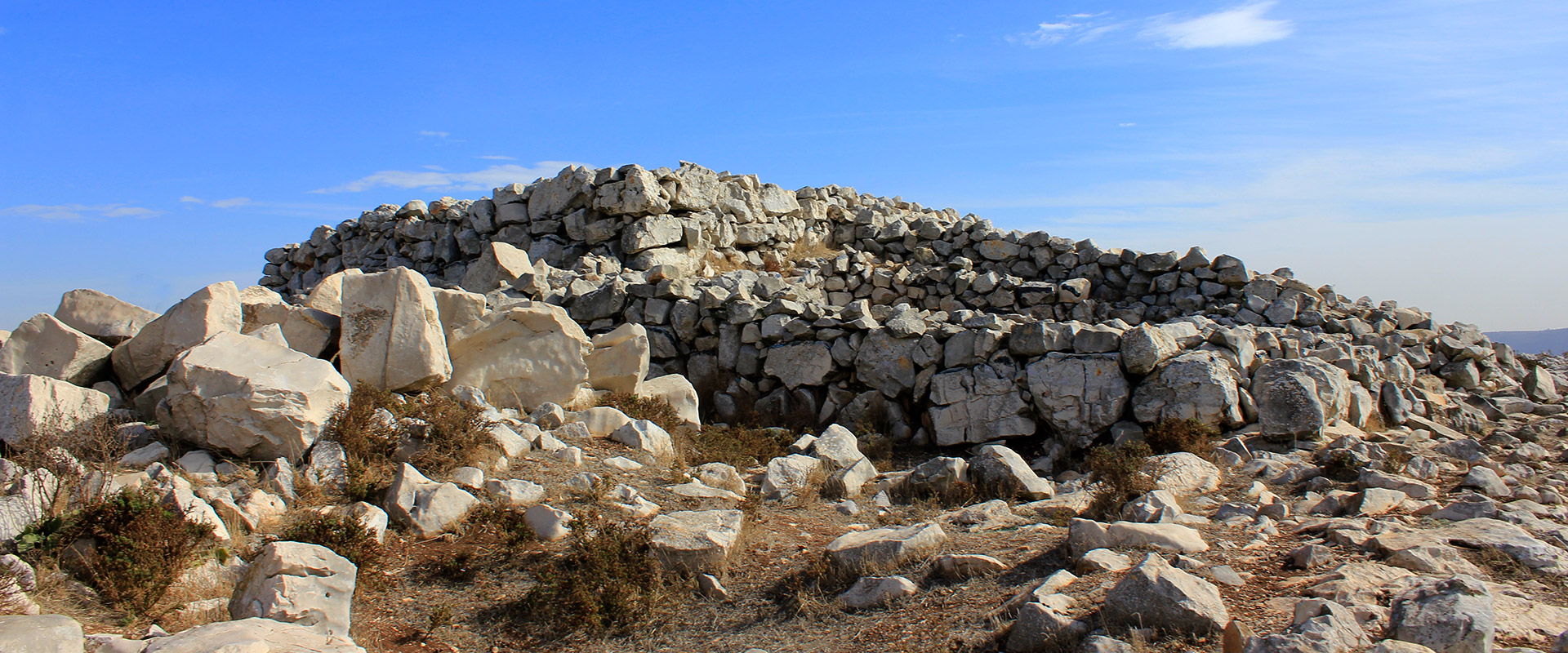The recent discovery of Joshua's Altar changes the face of biblical archaeology because it finds contradictions in the myth of the Canaanite origin - Israelites.
It was not until 1996 when Professor Adam Zertal from Haifa University uncovered the true biblical events and discovered the prophet Joshua's altar complex on Mount of Ebal.
The Altar of Joshua is one of most important ever biblical archaeological finds built near Nablus in the West Bank. It is a very large and impressive site.

Then Joshua built an altar unto the LORD God of Israel in mount Ebal, As Moses the servant of the LORD commanded the children of Israel, as it is written in the book of the law of Moses, an altar of whole stones, over which no man hath lift up any iron: and they offered thereon burnt offerings unto the LORD, and sacrificed peace offerings. And he wrote there upon the stones a copy of the law of Moses, which he wrote in the presence of the children of Israel. And all Israel, and their elders, and officers, and their judges, stood on this side the ark and on that side before the priests the Levites, which bare the ark of the covenant of the LORD, as well the stranger, as he that was born among them; half of them over against mount Gerizim, and half of them over against mount Ebal; as Moses the servant of the LORD had commanded before, that they should bless the people of Israel. And afterward he read all the words of the law, the blessings and cursings, according to all that is written in the book of the law. There was not a word of all that Moses commanded, which Joshua read not before all the congregation of Israel, with the women, and the little ones, and the strangers that were conversant among them.
Joshua 8:30–35 KJV
The altar on Mt Ebal. Instructions for two ceremonies now follow, to be held on Mt Ebal and, in the second case, Mt Gerizim also. These are mountains near Shechem, close to the centre of the promised land, and the ceremonies were to take place soon after the people had gone into it. The first ceremony (already foreshadowed in 11:26-32) consisted of setting up stones on Mt Ebal, containing all the words of this law, possibly meaning chs. 1-26 as a whole. The stones thus inscribed were to be a permanent reminder of them.
The setting up of the stones was to be solemnly marked by a sacrifice, for which an altar was to be separately erected. It is not likely that Shechem was thus marked out as the central place of worship which the Lord was to choose and which Israel was to seek (12:5); rather, this act of worship on Mt Ebal was a unique event marking the confirmation of the covenant at the beginning of the people’s life in the land. For the rules for building the altar see also Ex. 20:24-25.
In this whole ceremony Deuteronomy is once again like an ancient treaty, in which a copy of its terms was placed in the temple of the god of each of the parties, in a ceremony accompanied by sacrifices. The ceremony was in fact carried out by Joshua in due course (Jos. 8:30-35).
Gordon McConville, Deuteronomy, New Bible Commentary: 21st Century Edition; ed. D. A Carson et al.; Downers Grove: InterVarsity Press, 1994, 223.

After the discover of Adam Zertal revealed the biblical altar of Joshua on Mount Ebal, the minimalist school of archaeology is under several critics
Israeli scholars have played a central role in revitalizing debate concerning the processes of Israelite settlement in Canaan. The discourse focuses on four general models of settlement: a literal interpretation of a military conquest as portrayed in the book of Joshua; a more peaceful “infiltration” as seen in Judges; a “peasant revolt”; and a symbiosis model. The Israeli contribution has been spearheaded by comprehensive archaeological field surveys by Israel Finkelstein, Adam Zertal, Ram Gophna, and others. This huge settlement pattern database has made it possible to evaluate carefully these and other models with hard empirical data previously unavailable, providing an additional source of extrabiblical data to examine the historicity of the biblical accounts. Finally, there have been a number of large-scale excavations at sites including Acco, Aphek, Beth-shean, Dan, Megiddo, Tel Qasile, Tel Mevorakh, Tel Seraʿ, and Yoqneʿam which provide additional data for testing archaeological models.
“ARCHAEOLOGY AND THE BIBLE,” Eerdmans Dictionary of the Bible, 94.


Israeli scholars have played a central role in revitalizing debate concerning the processes of Israelite settlement in Canaan. The discourse focuses on four general models of settlement: a literal interpretation of a military conquest as portrayed in the book of Joshua; a more peaceful “infiltration” as seen in Judges; a “peasant revolt”; and a symbiosis model. The Israeli contribution has been spearheaded by comprehensive archaeological field surveys by Israel Finkelstein, Adam Zertal, Ram Gophna, and others. This huge settlement pattern database has made it possible to evaluate carefully these and other models with hard empirical data previously unavailable, providing an additional source of extrabiblical data to examine the historicity of the biblical accounts. Finally, there have been a number of large-scale excavations at sites including Acco, Aphek, Beth-shean, Dan, Megiddo, Tel Qasile, Tel Mevorakh, Tel Seraʿ, and Yoqneʿam which provide additional data for testing archaeological models.
“ARCHAEOLOGY AND THE BIBLE,” Eerdmans Dictionary of the Bible, 94.
The “minimalist” position would be that of Finkelstein currently, along with the minority “revisionist” biblical schools of Philip R. Davies, Niels P. Lemche, Thomas L. Thompson, and Keith W. Whitelam. The “maximalist” position, if there is one, would have to espouse some sort of large-scale military conquest by incoming Israelites from Transjordan, or even ultimately from Egypt, for which there is simply no archaeological evidence. The present treatment has tried to outline a middle-ground position, representing a growing consensus of scholars of several different schools, including virtually all archaeologists.




Is it okay to use these photos in a youtube presentation?? I would much appreciate it !
No, all the photos is copyrighted by Miguel Nicolaevsky from Cafetorah.com. If you want to use, please contact him at israelagency@gmail.com